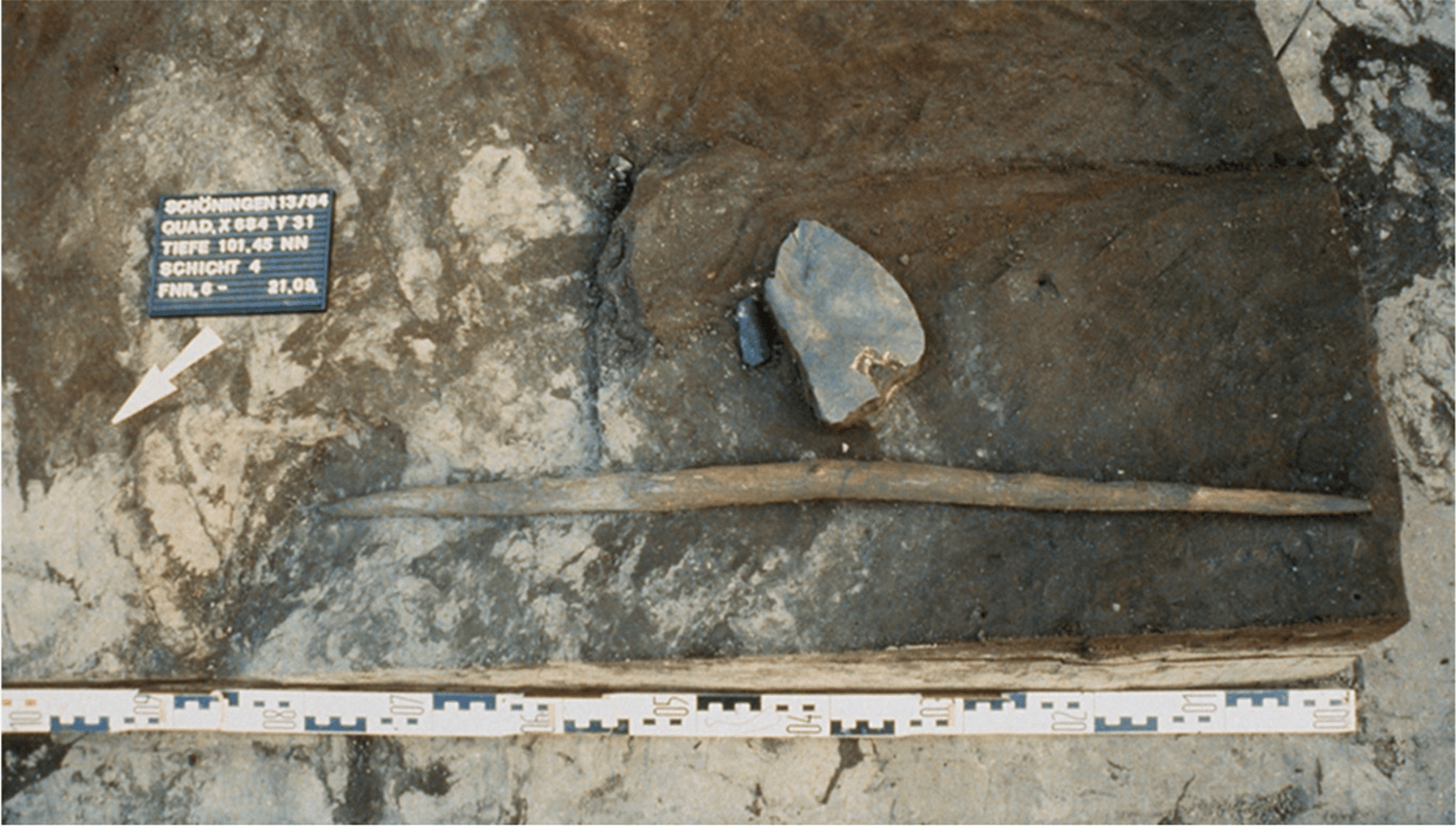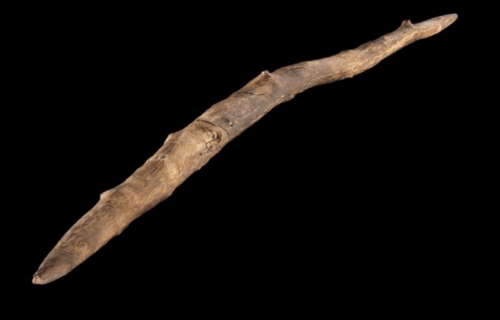SCHÖNINGEN, Germany — Archaeologists have unearthed the world’s oldest known big game hunting weapon in Germany, an artifact dating back 300,000 years. This weapon, a four-foot-long double-pointed stick, was used to hunt large animals such as elephants and rhinoceroses, researchers believe. Its length and design enabled early humans to accurately hurl it at grazing animals from distances exceeding 100 feet.
The weapon demonstrates the sophistication of early human woodworking techniques, challenging prior assumptions about their intelligence and skill.
“Our detailed analysis of the double-pointed stick leaves no doubt that this was a well-planned, expertly manufactured, and finely-finished tool,” according to researchers, led by study author Dr. Annemieke Milks from the University of Reading.
The discovery was made at the Schöningen Paleolithic site complex in Lower Saxony, Germany, a coal-mining area that has consistently yielded significant archaeological finds since the 1990s. The makers of this artifact, an extinct group of hominins known as the “Heidelberg people,” utilized the double-pointed stick to hunt large ungulates that congregated to drink or bathe at a nearby lake.

“The hominins selected a spruce branch which they then debarked and shaped into an aerodynamic and ergonomic tool,” the researchers write in the journal PLOS ONE. “They likely seasoned the wood to avoid cracking and warping. After a long period of use, it was probably lost while hunting, and was then rapidly buried in mud.”
“The Schöningen throwing sticks may have been used to strategically disadvantage larger ungulates, potentially from distances of up to 30 meters,” the team continues.
The fine surface, carefully shaped points, and evidence of polish suggest this was not a quickly made, disposable item, but a personal tool crafted for repeated use.
“The Schöningen hominins thus had the capacity for remarkable planning depth, knowledge of raw materials, and considerable woodworking skill, resulting in an expertly designed tool,” the team writes. “The double-pointed sticks were potentially used to assist the hunting of larger prey, but may have also been used for hunting birds and/or small mammals.”
The creators of this tool, formally known as Homo heidelbergensis, were the first humans to build homes and hunt large animals. They disappeared around 28,000 years ago, likely due to climate change.
South West News Service writer Mark Waghorn contributed to this report.


Your narrator has a most annoying accent.